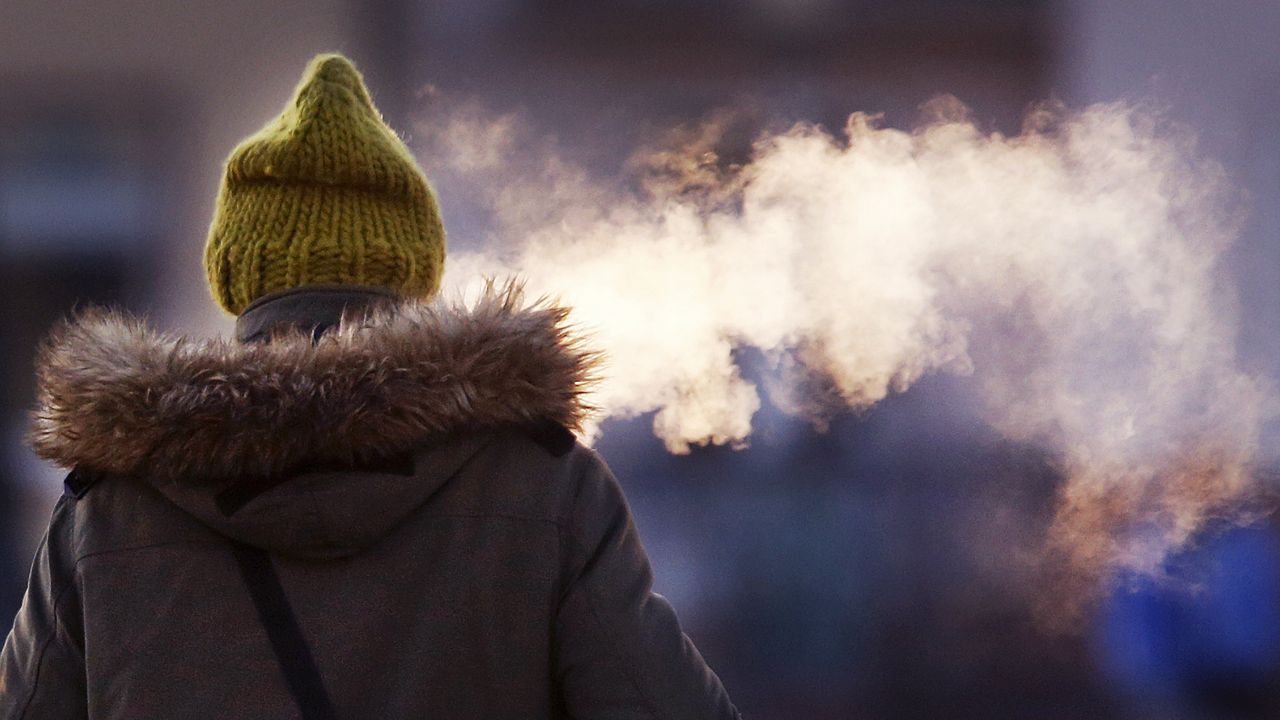Seeing your breath for the first time is a telltale sign that winter is around the corner. We usually associate this with just cold temperatures, but humidity has a lot to do with it as well.
Temperature and humidity are linked, since cold air can’t hold as much moisture as warm air. The dew point, which is a measure of moisture in the air, can’t be above the air temperature. Once the numbers are the same, the air becomes saturated.
When you exhale, your breath has lots of moisture, or water vapor in it. The air from your lungs is the same temperature as your body, so around 98.6 degrees. When you breathe out on a chilly day, your breath has more moisture in it than the surrounding environment.
The cold air outside will rapidly drop the temperature of your breath. As it cools, the moisture in your breath rapidly condenses from gas to water vapor when it reaches the dew point. When you see your breath, that’s the water vapor.
However, if it’s too dry outside, the moisture you exhale can evaporate so quickly you won’t see your breath.
This condensation process is the same as when dew droplets form on the outside of a cold glass or can. When the surrounding warm air cools and condenses, creating water from the surrounding air.
Next time you see your breath outside, you’ll know it's condensation at work.
Our team of meteorologists dive deep into the science of weather and break down timely weather data and information. To view more weather and climate stories, check out our weather blogs section.



